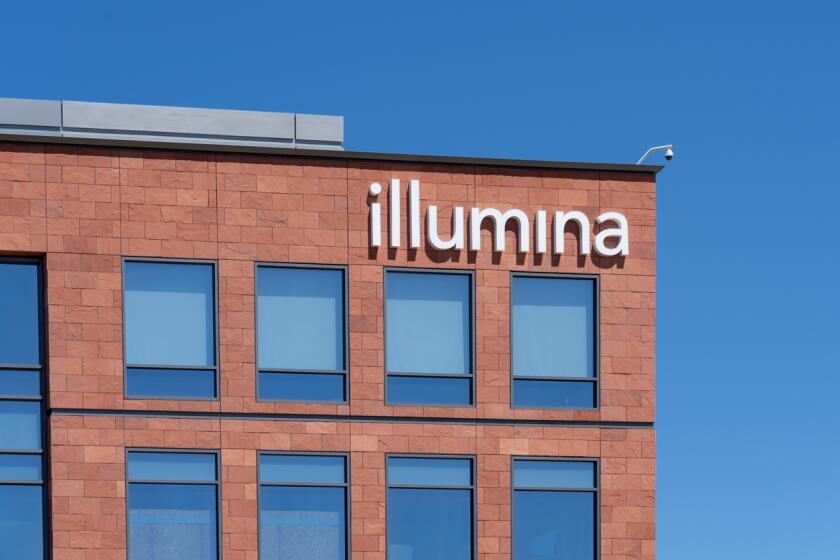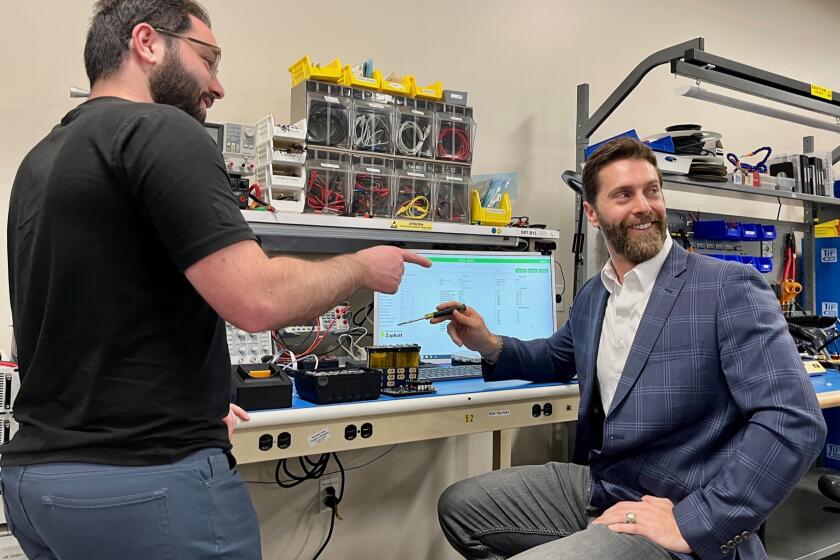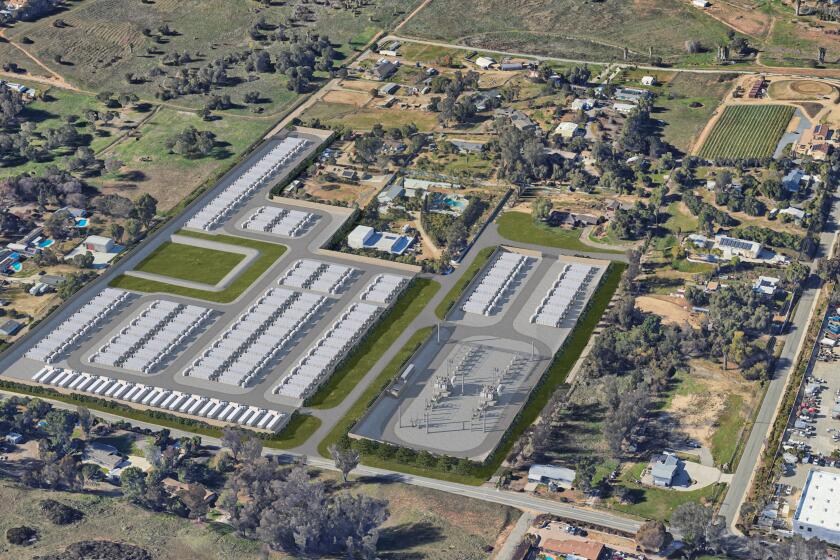Finalists named for Qualcomm Tricorder XPrize
Ten teams from across the globe made the cut Wednesday for the final round of the $10 million Qualcomm Tricorder XPrize, where they aim to build a mobile diagnostic device akin to the fictional Tricorder of “Star Trek” fame.
A panel of XPrize judges trimmed 21 entrants to 10 finalists based on the innovation of their proposals. Now comes the hard part — building a consumer-focused mobile gadget capable of diagnosing 15 medical conditions, ranging from diabetes to anemia to pneumonia to chronic obstructive pulmonary disease. The device also must capture five vital signs, such as blood pressure, temperature and heart rate.
Announced at a medical device conference in Chicago, the finalists must deliver prototype Tricorders by May. They will be tested and evaluated for several months, in part by real patients.
“It’s kind of like a clinical trial, but it is a competition,” said Dr. Erik Viirre, an adjunct professor and physician in UC San Diego’s Health System who is serving as the technical and medical director for the Tricorder XPrize. “We are doing a medical technology runoff, which has never been done before.”
The winner, slated to be announced in January 2016, will get $10 million in prize money put up by the Qualcomm Foundation. The San Diego wireless giant hopes the competition jump-starts the mobile health industry.
“We want consumers to take a more proactive approach to managing their health, and having convenient access to real-time medical data will do just that,” Grant Campany, senior director of the Qualcomm Tricorder XPrize, said in a statement.
Four finalists came from the United States, and two are based in the United Kingdom. Others are from Canada, Taiwan, India and Slovenia. A team from San Diego State University, headed by graduate student Lambert Ninteman, did not make the cut.
“It’s just a super hard competition,” Viirre said. “The XPrize is like the Olympics, and the Olympic event I think about for this XPrize is the decathlon. The technology we will have in the Tricorder — instead of just one single thing like blood pressure or diabetes — will (monitor) many, many aspects of your body’s function.”
Founded in 1995, the XPrize competition aims to advance innovation. In 2004, Burt Rutan — backed by Microsoft co-founder Paul Allen — won the $10 million Ansari XPrize by producing a private suborbital spacecraft.
Google is sponsoring an ongoing $30 million contest to develop a lunar rover robot and fly it to the moon. The Qualcomm Foundation officially sponsored its Tricorder contest in January 2012.
The finalists are:
• Aezon of Rockville, Md., student engineers from Johns Hopkins University partnering with the Center for Bioengineering Innovation & Design.
• DMI of Cambridge, Mass., led by Dr. Eugene Chan of the DNA Medicine Institute, partnering with NASA, the National Institutes of Health and the Bill and Melinda Gates Foundation.
• Final Frontier Medical Devices of Paoli, Pa., led by the founders of Basil Leaf Technologies.
• SCANADU of Moffett Field, a Silicon Valley startup led by technology entrepreneur Walter De Brouwer.
• CloudDX, a Canadian team from medical device manufacturer Biosign.
• Danvantri, a team from technology manufacturer American Megatrends India.
• Dynamical Biomarkers Group, a Taiwan-based team of physicians, scientists and engineers led by Harvard Medical School professor Chung-Kang Peng.
• MESI Simplifying Diagnostics, a Slovenia-based team from medical device maker MESI.
• SCANurse, a London-based group from diagnostic medical manufacturer SCANurse.
• Zensor, a Northern Ireland-based team from clinical sensor and electrode company Intelesens.
Get U-T Business in your inbox on Mondays
Get ready for your week with the week’s top business stories from San Diego and California, in your inbox Monday mornings.
You may occasionally receive promotional content from the San Diego Union-Tribune.










